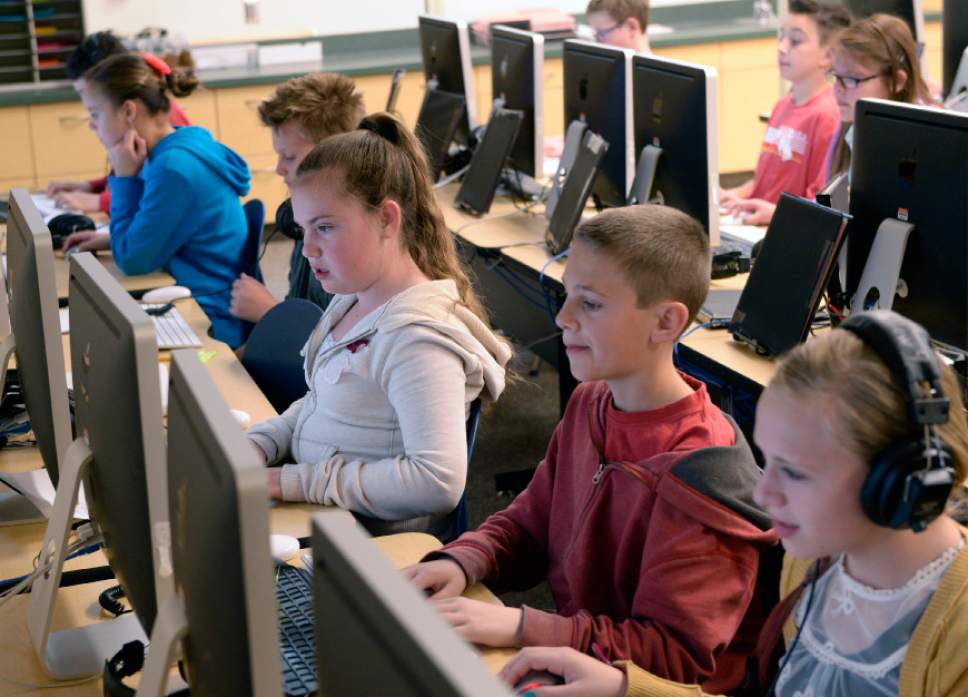This is an archived article that was published on sltrib.com in 2017, and information in the article may be outdated. It is provided only for personal research purposes and may not be reprinted.
Public school teachers are too slow to embrace classroom technology purchased by the state, according to some Utah lawmakers.
They voiced that concern Wednesday as members of the state Legislature's Public Education Appropriations Committee met to discuss software "fidelity," or the rate of students achieving a minimum number of hours using software programs.
Sen. Howard Stephenson, R-Draper, said too many teachers are unwilling to abandon their traditional lesson plans in favor of computer-enhanced teaching. He then evoked a biblical reference, wondering aloud what it might take for Utah to see widespread implementation of school technology.
"Are we going to have to wait like Moses did," Stephenson said, "wandering 40 years in the wilderness for the old ones to die off before we can really embrace this with fidelity?"
The comment generated criticism on social media, including by Sharon Gallagher-Fishbaugh, former president of the Utah Education Association.
"This comment is beneath you!" Gallagher-Fishbaugh wrote on Twitter to Stephenson. "Shamefully disrespectful and ignorant."
Linda Mariotti, Granite School District assistant superintendent, said low software fidelity is less a result of techno-phobic educators and more a reflection of staffing turnover at schools and the lack of flexibility in state software contracts.
Some technology training occurs in the summer before new teachers are formally hired, she said, and using state-purchased software often means abandoning district-developed programs that experienced teachers are comfortable with or even prefer for their students.
Mariotti said it would be better to allow teachers to choose from a suite of computer programs rather than hold them to the minimum requirements of multiple, and occasionally overlapping, technology vendors.
"They're having to chose between something else that's vying for the same amount of time," she said.
And John Zurbuchen, an assistant superintendent for Davis School District, said it's wrong to assume that simply because lawmakers are enamored with a particular software company, that its product will be a one-size-fits-all solution for Utah's students.
"None of these providers, all being wonderful providers, will be applicable to every classroom across every school," Zurbuchen said.
Rep. Joel Briscoe, D-Salt Lake City, said the committee's discussion of software fidelity focused on the wrong area of education. Instead of identifying the schools that use reading technology the most, he said the state should instead find the schools were students are best being taught to read.
Software is a great education tool, Briscoe said, particularly when matched with an effective teacher well-trained to incorporate software into lessons.
"The best teaching is done by teachers and not by software," he said.
Wednesday's discussion was part of an ongoing "deep dive" into Utah's education budget by the appropriations committee.
Committee co-chairs, Sen. Lyle Hillyard, R-Logan and Rep. Dan McCay, R-Riverton, said earlier this year that their goal during the Legislature's interim months was to identify whether certain areas of education spending are best prescribed by the state or instead should be deferred to district administrators for local decision-making.
McCay encouraged his colleagues to remember that goal as the committee discusses various topics in the lead-up to the 2018 legislative session, which convenes in January.
"By adding or taking away, are we making that education better?" he asked. "If we are, then let's find a way to do more of it. And if we are not, then let's not do it any more."
Twitter: @bjaminwood



